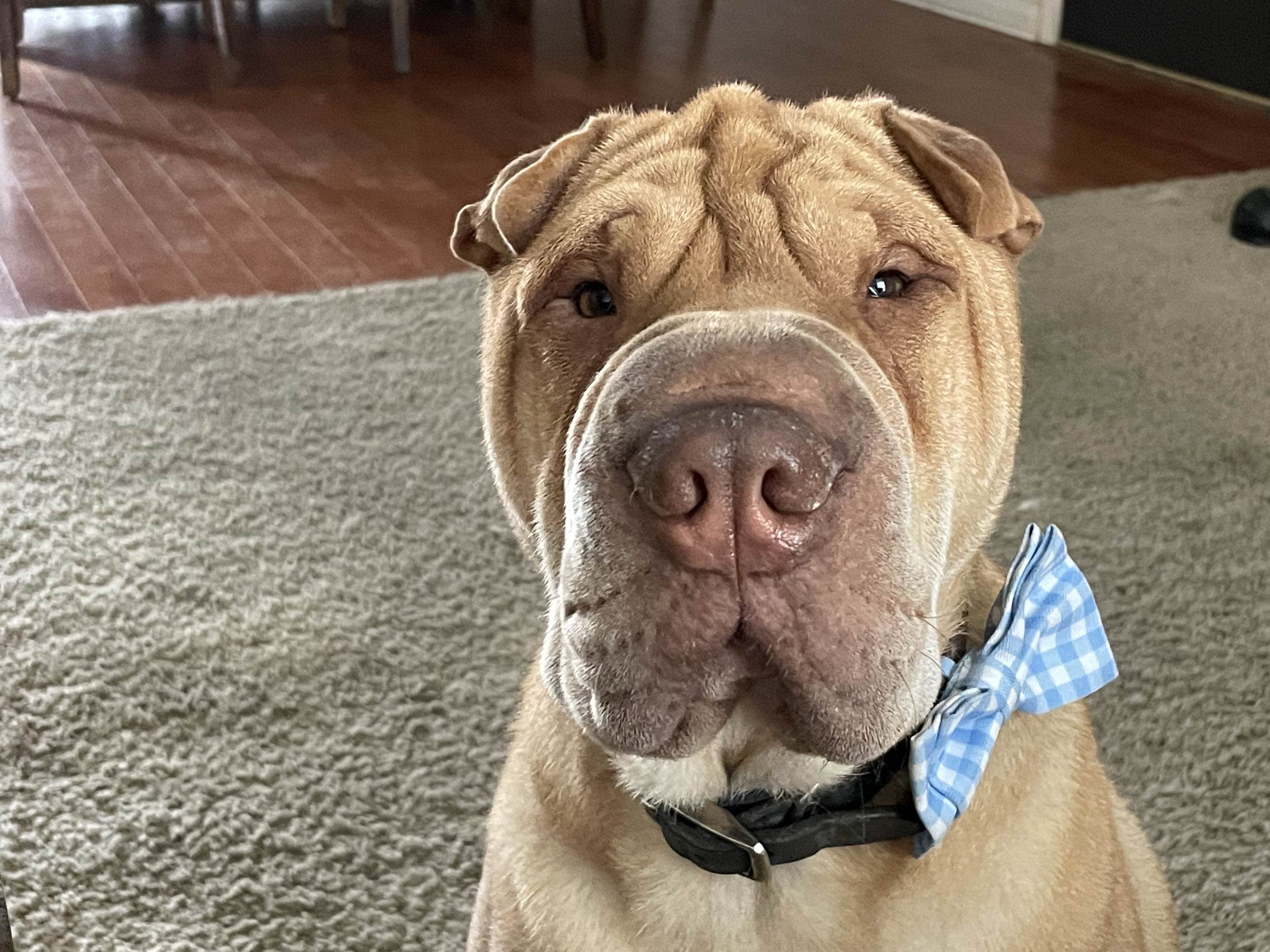Helping A Dog Feel Good About Having a Harness Put On
By: David Codr
Published Date: August 6, 2021
For this Omaha dog behavior training session we worked with Diggs, a 2 year-old Shar Pei who doesn’t like the harness and acts aggressive in some situations.
Diggs’ guardian had mentioned to me that he seemed most reactive when people visiting his home who tried to reach and pet him. As a result, I ignored him when I arrievd aside from dropping quite a few high-value treats on the ground. I wanted to give him time and space to approach me when he felt comfortable. I started to discuss the problems with his guardian while pointing out body language signals as Diggs offered them. Knowing how to read a dog’s body language is an important skill many dog guardians never learn to do.
After discussing the situation with Diggs’ guardian, I learned that when he was younger, he had a pretty nasty ear infection. Instead of getting drops, there was ointment that had to be applied to his ears and the vet would pin the dog down to apply the treatment.
Since Diggs needed to have the ear treatment done quite a few times, this repeated forced restraining resulted in a dog feeling cornered and eventually lashing out. Unfortunately the vet’s recommendation was to put him on a muzzle instead of desensitizing him to the process of having his ears touched. If a dog is reacting or protesting, they are communicating disagreement or discomfort. If you pin a dog down or restrain them in these type of situations, its very common and normal for the dog to act out with lunges, growls, nips and if the communication is not respected, eventually turn to dog bites.
Because of his reaction to the forced pinning, the Vet informed the guardian that Diggs was aggressive. In my professional opinion, this is not at all the case. The dog was simply raising his level of disagreement because people around him were not listening when he felt scared and had no other options.
I made sure to go over cut off signals as well as how dogs communicate when they are granting consent. I also made sure to recommend that the guardian notify me any time the dog is showing hesitation to do something instead of trying to force or power their way through it. While these may seem like small things in the moment, they can have long lasting repercussions such as when the vet restrained Diggs to apply the treatment to his ears.
Tips to Help a Dog Feel Good About Putting on a Harness
Another issue the guardian wanted me to help with was her dog not liking the harness. As soon as the guardian picked up the harness, Diggs ran as far away as the room allowed. This is one of the strongest ways a dog can say I dont like something, short of biting.
I had a sense of déjà vu as I handed my camera to the guardian so that I could record a video tip for dogs who don’t like having a harness put on. This trick to help dogs who hate the harness is called a conditioned emotional response or CER. The CER is a great way to help a dog get over a fear of something because it allows the dog to proceed at a pace that it feels comfortable with, while building up positive associations.
If you have a dog that will not let you put on the harness, you should check out the free positive dog training video below.
This secret to helping dogs who do not like the harness can be used for other things as well; the leash, muzzles, collars, etc. The key is to go slow, at the dog’s pace, watching for indications that it feels uncomfortable or anxious such as licking his lips, turning away, refusing to come over, lowering its head, cowering, bearing teeth, etc. If you follow those mandates, a Conditioned Emotional Response is one of the best ways to help a dog get over a fear of something.
I recommended that the guardian practice this exercise to help a dog get over a fear of the harness a couple of times a day in short, one-minute practice sessions. This will be a bit of a challenge as Diggs is currently living apart from his guardian due to restructuring their living arrangement. Fortunately this is temporary. Hopefuly this write up and videos will help
Helping a dog get over it’s fear of the harness is not hard with this technique. In fact anyone can do it, even if you are not a professional Shar-Pei dog trainer.
We wrapped up the session by recording a roadmap to success summary video so that the guardian could remember all of the dog behavior tips I shared with her in this in-home dog training session.
Categorized in: Dog Behavior


